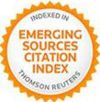Abstract
UNESCO’s extension of the concept of heritage to intangible has been changing the status of architectural designs and the operative frame of the practice of architectural reconstruction. The variety of reconstruction cases requires specific procedures and terms. The terms are here investigated by an analysis of the historical and theoretical roots of such a practice, segnately on the figure of Quatremère de Quincy; the procedures are discussed by means of a series of personal experiences on literary architecture, architectural projects, fictive architecture. They are retrospectively analysed from the point of view of the sources –to define both the content and the appearance – which can be endogenous to the document/monument (and prioritary) or exogenous, with a focus on the transparency of procedure.
Keywords
Full Text:
PDFDOI: http://dx.doi.org/10.2423/i22394303v13n1p15
References
Apollonio, F. I. (2016). Classification Schemes for Visualization of Uncertainty in Digital Hypothetical Reconstruction. In Münster, S. et al. (Eds.), 3D Research Challenges in Cultural Heritage II. How to Manage Data and Knowledge Related to Interpretative Digital 3D Reconstructions of Cultural Heritage (pp. 173–197). Heidelberg: Springer International Publishing.
Belardi, P. & Menchetelli, V. (2017). Intangible archeology. Architectural surveying and digital recon- struction of the Porsenna tomb as described by Baldassarre Orsini. Disegnarecon 10(19), 13.
Bill, M. (2006). Le Corbusier. Oeuvre Complète. Volume 3. 1934-38. Basel, Boston, Berlin: Birkhäuser Publishers.
Braghieri, N. (2013). Architettura, arte retorica. Genova: Sagep.
Brandi, C. (2005). Theory of Restoration. Rome: Istituto centrale per il restauro.
Byrne, D. (2008). A critique of unfeeling heritage. In L. Smith & N. Akagawa (Eds.), Intangible Heritage (pp. 229-252). London: Routledge.
Camerota, F. (2006). La prospettiva del Rinascimento: arte, architettura, scienza. Milano: Electa.
Carpo, M. (2003). Drawing with Numbers. Geometry and Numeracy in Early Modern Architectural Design. Journal of the Society of Architectural Historians, 62(4), 448-469.
D'Acunto, G., & Friso, I. (2022). Narrative codes and expressive styles in the Virtual Museum. In C. Battini & E. Bistagnino (Eds.), Dialoghi: visioni e visualità. 43° Convegno internazionale dei docenti delle discipline della rappresentazione (pp. 531-537). Milan: Franco Angeli.
Di Napoli, G. (2004). Disegnare e conoscere. Torino: Einaudi.
Groote, P. & Haarsten, T. (2008). The Communication of Heritage: Creating Place Identities. In B. J. Graham & P. Howards (Eds.). The Ashgate Research Companion to Heritage and Identity (pp. 19-36). Franham: Ashgate Publishing.
Heuer, C. (2009). Hieronymus Cock’s Aesthetic of Collapse. Oxford Art Journal, 32(3), 387-408.
Kirshenblatt-Gimblett, B. (2004). Intangible Heritage as Metacultural Production. Museum International, 56, 52-65.
Letarouilly, P.M. & Selvafolta, O. (1992). Edifices de Rome moderne: ou recueil des palais, maisons, églises, couvents, et autres monuments publics et particuliers les plus remarquables de la ville de Rome. Novara: Istituto Geografico De Agostini.
Online Etymology Dictionary, https://www.etymonline.com
Percier, C., Fontaine P. F. L. & Garric, J. P. (2008). Palais de Rome. Palais, maisons, et autre édifices modernes dessinés à Rome. Paris: Institut national d’histoire de l’art.
Ploder, J. (1998). Heinrich von Geymüller und die Architekturzeichnung. Werk, Wirkung und Nachlaß eines Renaissance. Wien: Boehlau.
Quatremère de Quincy, A. C. (1826). Restitution du tombeau de Porsenna, ou Dissertation dont le but est d’expliquer et de justifier la description de ce monument, faite par Varron et rapportée dans Pline. Recueil de dissertations archéologiques Paris.
Quatremère de Quincy, A. C. (1936). Lettres sur l'enlèvement des ouvrages de l'art antique à Athènes et à Rome, écrites les unes au célèbre Canova, les autres au général Miranda. Paris, Bibliothèque de l'Institut National d'Histoire de l'Art, collections Jacques Doucet, NUM 8 VA 628. https://bibliotheque-numerique.inha.fr/iiif/12006/manifest
Quatremère de Quincy, A. C. (1999). The Historical Dictionary of Architecture. Transl. Samir Younés. London: Andreas Papadakis.
Wragge Morley, A. (2010). Restitution, description and knowledge in English architecture and natural philosophy, 1650–1750. Architectural Research Quarterly, 14, pp. 247-254.
Article Metrics
Metrics powered by PLOS ALM
Refbacks
- There are currently no refbacks.
Copyright (c) 2023 fabio colonnese

This work is licensed under a Creative Commons Attribution-NonCommercial-NoDerivatives 4.0 International License.
SCIRES-IT, e-ISSN 2239-4303
Journal founded by Virginia Valzano





